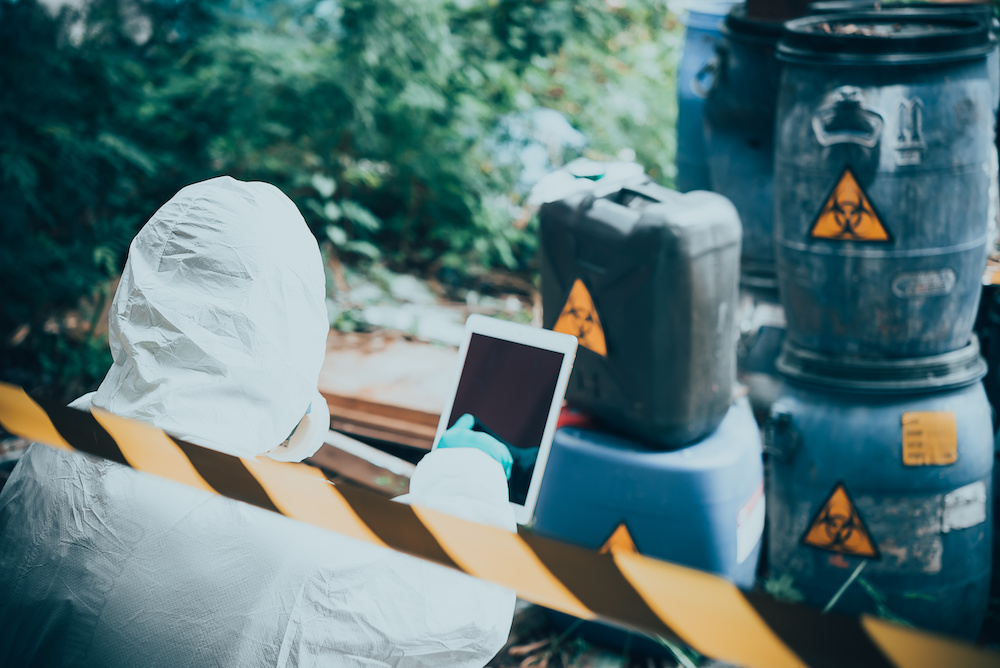Chemicals and hazardous materials are a part of nearly any industry today, whether an organization is dealing with pesticides or solvents, construction materials, or even simply using ink for printers. Having clear hazardous and chemical waste management is vital to any organization’s environmental, healthy and safety (EHS) program, as well as its environmental, social and governance (ESG) strategy.
Chemical and waste management requires careful tracking, safe handling, reporting, and compliance with regulations to ensure workers are kept out of harm’s way, the environment is protected, and that the organization itself isn’t found liable for mishandling of this waste.
See these tips to help ensure your organization is doing all it can to limit hazardous and chemical waste and following waste management best practices in its EHS and ESG strategies.
1. Limit the use
Using less hazardous materials and chemicals may seem obvious, but it’s an important note in managing waste. While limiting the use of these substances and materials is not possible in every industry, some organizations may be able to find supplements and alternatives to replace hazardous chemicals and materials. Organizations can also opt for less-hazardous materials when selecting what to purchase. And always be sure to reduce and reuse the chemicals that are being accessed.
2. Control and monitor inventory
Strict inventory control and oversight is imperative to an organization’s chemical and waste management. This data should include information to monitor emergency response capacity limits, chemical stocks, storage temperature, track the shelf life, and much more. The days of pen and paper will not do by modern standards – a strong software system is needed to effectively track inventory, including one that can manage it by geo-location, container, facility, department, and storage level, and check quantities against hazards databases.
3. Prevent accidents and optimize reduction
Analyzing where your chemicals and hazardous materials are stored, and how workers access them, can help minimize risk and avoid accidents and overuse. For example, if a worker needs to collect a chemical, how far do they need to travel to access it and then take it back to their workspace? The further apart, the greater the risk of an incident. Can your organization reduce handling by pre-weighing packages? Also, consider buying bigger containers to limit the amount of times substances need to be disposed and refilled. Step back to take a fresh look at what could be changed to maximize safety and limit handling of hazards and chemicals.
4. Consider chemical and waste recycling
Recycling is a valuable part of any type of waste management (not to mention an effective ESG strategy) – and that goes for hazardous materials and chemicals as well. Recycling allows for substances and materials that would otherwise be discarded to be collected and separated from waste. Depending on the substance, this can often be done onsite or supported through a licensed third-party. Consider checking with the manufacturer to understand what is possible with the materials used.
5. Follow proper waste disposal
Unfortunately, not every chemical and hazard can be recycled – and when they can’t, they must be disposed of properly. Follow the guidelines noted for each material in use, and never let waste build up on your premise. If you haven’t already, be sure to implement a software tracking system to monitor the amount of excess waste onsite, as well as keep you alerted to any new or changing regulations that must be complied with.
Creating a strong hazardous and chemical waste management solution should not only help you avoid violations, it should also enable greater operational productivity, fast incident response, and continuous improvement supporting a strong safety culture, to make your organization a safer place overall.
How DevonWay can help
DevonWay – which specializes in EHS software created for high-risk, highly regulated organizations – is designed to protect health and safety, the environment, and your organization. DevonWay Chemical Management helps you avoid incidents and violations with Safety Data Sheet (SDS) management and access on mobile devices, online and off, to meet Right-to-Know (RTK) requirements, and DevonWay Hazardous Waste Management strengthens your safety culture and ensures regulatory compliance.
Use the products you need to fit your organization’s EHS needs while also breaking down silos across all aspects of operations. Request a free demo today to see what DevonWay can do for you.







